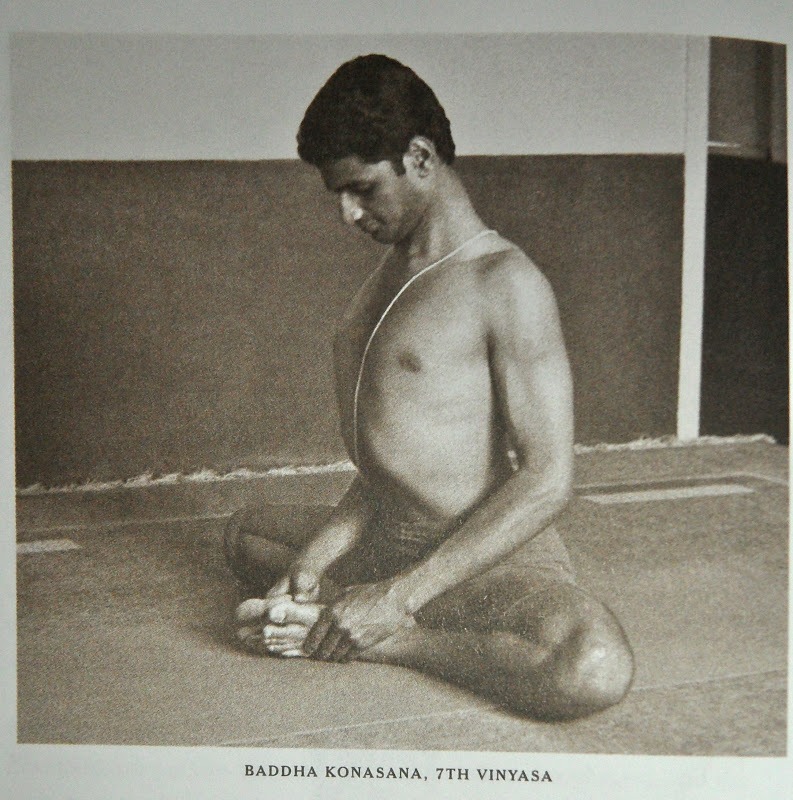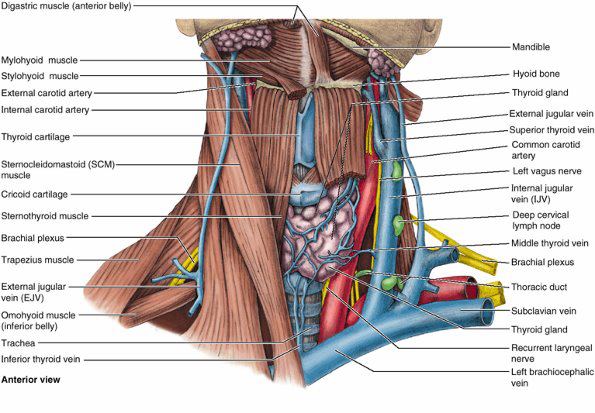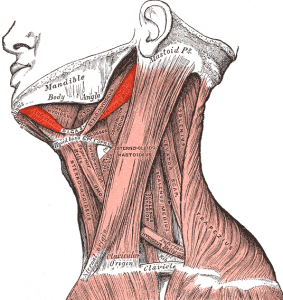Bandhas part 3
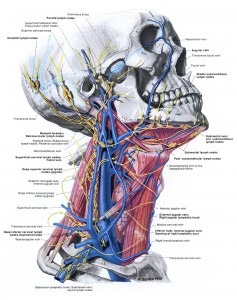
Jalandhara bandha is a muscular group that interlocks by tucking chin into chest to elongate the back of the neck. This is particularly useful in inversions like headstand and shoulder stand, which can place stress on the neck if it is not fully and properly elongated. This interlock can also include opening the chest and sternum in many cases to allow for great lung expansion when inhaling.
The sanskrit meaning of the word is enlightening: Jala means web, or net and dhara means contracting. So the contraction of the chin towards the chest lengthens the posterior (rear) neck muscles to elongate the back of the neck and highest portion of the spine. The neck muscles truly are an interweaving web to allow for the massive amount of rotation and movement that our heads are capable of.

By tucking the chin to chest, you allow the spine to grow longer, creating more room for breath capacity (the spine is intricately linked to respiration). This is why the jalandhara bandha is used often in breathing exercises. Lengthening the rear neck muscles also creates more space for blood flow and nerve connections to the brain and skull. The arteries and veins that run along the neck muscles are extremely important; they transport oxygenated blood to the brain. This is why headstands and shoulderstands are so beneficial; they reverse this bloodflow and while the jalandhara bandha is locked allows for the nervous system to reverse it’s usually flow against gravity. The lymph system also receives enormous benefit from being inverted for an appropriate period of time.
There are also some essential organs that are compressed during the interlocks. The thyroid gland get compressed during the lock, which can create more space for functioning of the organ. The lymph system is also greatly affected by the interlock, because compressing the lymphs will also create more room for the flow of lymphatic fluid. The physical benefits of the interlock are undeniable.
You can see the muscles of the neck in more detail and how the interlock is truly a contraction of a web of muscles surrounding the Hyoid bone. We’ll talk more about the hyoid bone in the next article, part 4: Jiva bandha. You will also notice a release in the shoulders when practicing the interlock, because of the relationship between the neck and the shoulders. You can see the trapezius muscle extends all the way to the back of the skull and that lengthening this in combination with the serno-cleido-mastoideus muscle. Muscularly, the contraction is extremely important for headstands! You should not be practicing balancing on your head without this interlock! It will lead to neck pain and possible injury. Headstand, according the yoga alliance statistics, is the pose where people get injured the most often in the United States. This is probably a result of not knowing how to fully extend the neck using the jalandhara bandha interlock. If you want to start learning about the lock without a chance of injuring yourself, start in shoulderstand. Lengthen your neck as much as possible and then practice building the strength necessary for headstand in rabbit pose (sasankasana).
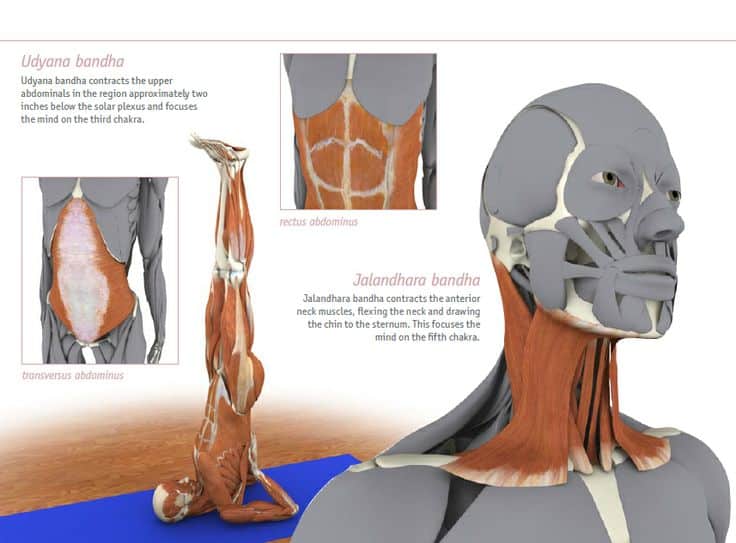
Here is Leslie Karminoff’s depiction of shoulderstand, this is a great way to work on the bandha. I highly recommend checking out his work at Bandha Yoga.
Compress chin to chest during meditation at the end of exhales. You can retain the lock for an inhale as well, notice the increased space on your inhale. Combine this with the uddiyana bandha and mula bandha and then notice how much space there is. This is a full lengthening of the spine through muscular contractions and muscular interlocks, which is extremely useful for creating space for breath, and life force energy.
Stay tuned for the final piece of the puzzle of the bandhas, the Jiva bandha. Used in conjunction, these interlocks will change the way you practice. Stay tuned for part 4, talk to you soon…

